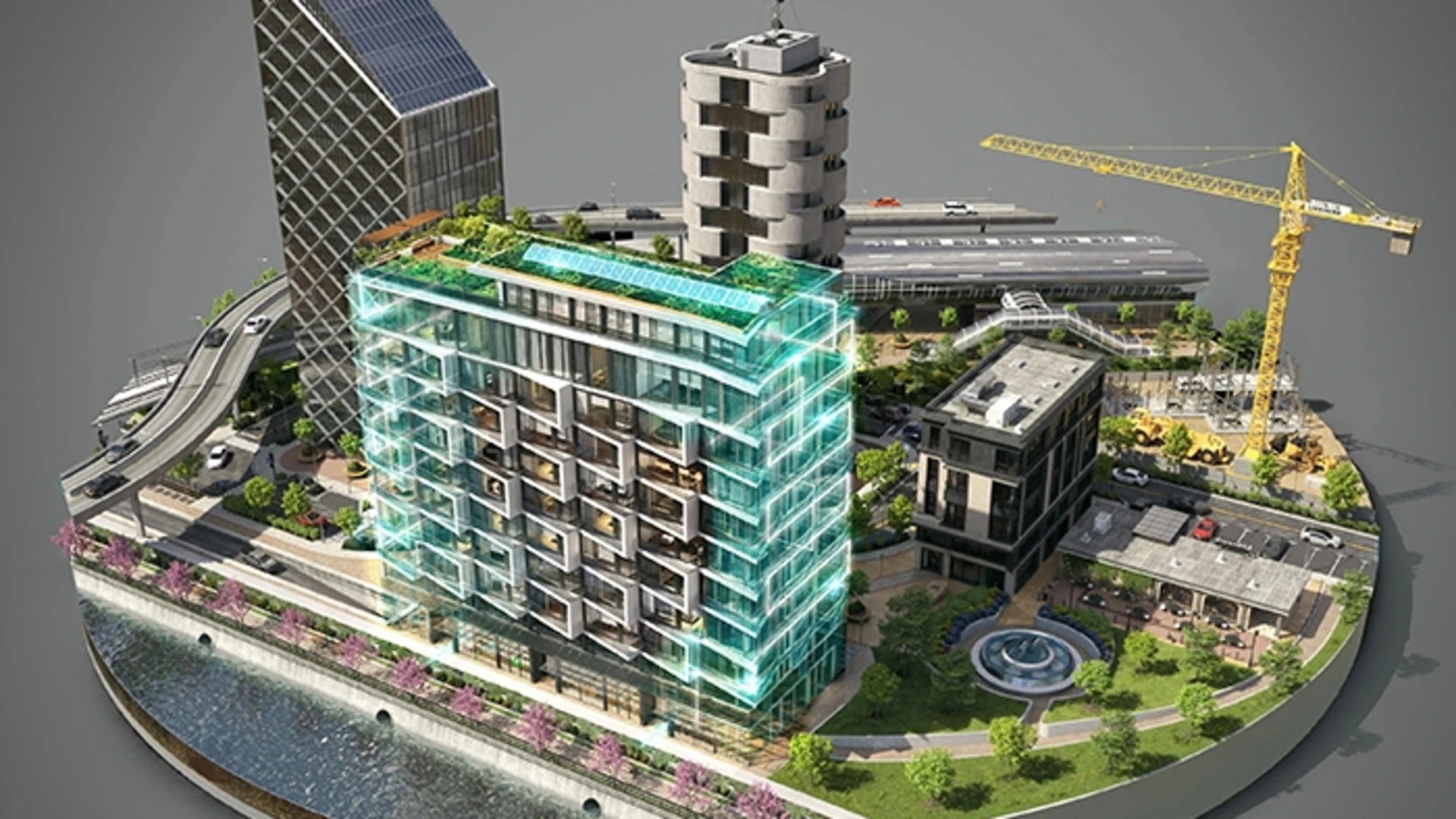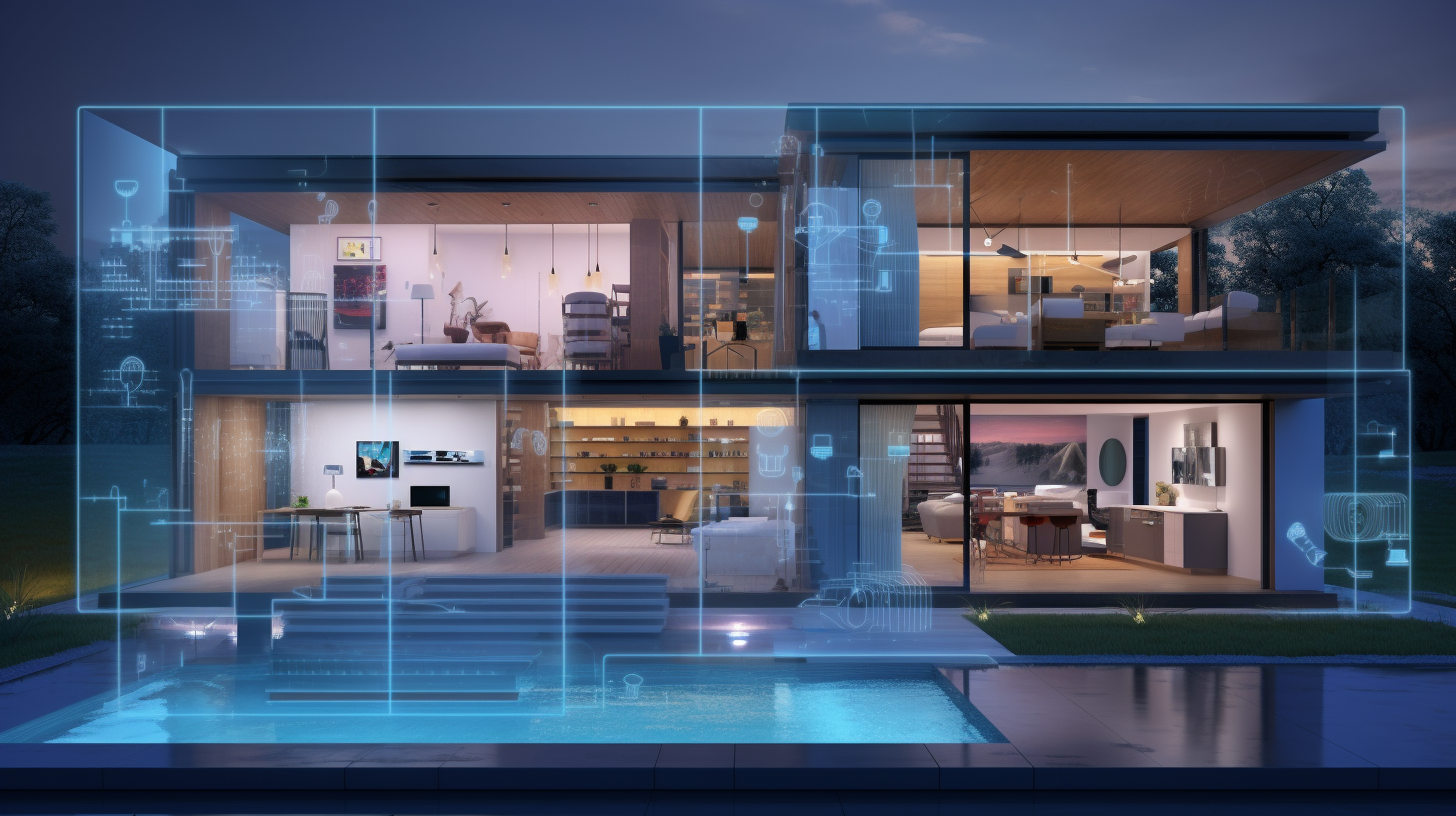Smart Architecture Design for Home: Integrating Technology into Living Spaces-In today’s world, technology is changing the way we live, work, and even interact with our homes. As we move towards a more connected and efficient lifestyle, smart architecture design for home is becoming a key element of modern living. Gone are the days when a home’s design was simply about aesthetics and comfort. Now, homes are being designed to be smart, energy-efficient, and responsive to the needs of the people living in them.
In this article, we’ll explore how technology is transforming home architecture and the incredible benefits that come with it. From automated systems to energy-efficient designs, the future of home living is already here.
What is Smart Architecture Design for Home?
Smart architecture design for home refers to the integration of advanced technology into the design and construction of residential buildings. This type of architecture focuses on creating homes that are more efficient, sustainable, and adaptable to the needs of their inhabitants. Through the use of interconnected devices, sensors, and automated systems, homes are able to respond to environmental changes, enhance comfort, and improve security.
Unlike traditional home designs, where technology was merely an afterthought, smart homes incorporate these elements right from the planning phase. This allows for the seamless integration of systems that work together to make life easier and more efficient.
Key Features of Smart Architecture Design

- Smart Home Automation
One of the core elements of smart architecture design for home is home automation. Automation systems control everything from lighting, temperature, and security to entertainment and appliances. For instance, you can adjust the lighting and climate through a smartphone or voice assistant, ensuring comfort without ever having to get up. - Energy Efficiency
Energy efficiency is at the heart of smart home design. Through smart thermostats, energy-efficient lighting, and solar panels, these homes significantly reduce energy consumption. Smart thermostats learn your habits and adjust the heating and cooling based on your schedule, ensuring that energy is only used when needed. This not only lowers utility bills but also helps reduce a home’s carbon footprint. - Integrated Security Systems
With the rise of IoT (Internet of Things), home security has become more sophisticated. Smart homes are equipped with cameras, motion sensors, and door locks that can be monitored remotely through apps. You can receive real-time alerts, lock/unlock doors, or even view live video footage of your home no matter where you are. (Read More: Home Renovation Cost Estimator: A Must-Have Tool for Every Remodel) - Sustainable Design
Sustainability is another key component of smart architecture design. Eco-friendly materials, solar power, and rainwater harvesting systems are commonly used to reduce a home’s environmental impact. With advanced energy management systems, homes can monitor energy consumption and reduce waste, helping homeowners save money while also protecting the planet. - Personalized Living Experience
Smart homes can be customized to meet the specific needs of the people who live in them. From voice-controlled lights to personalized climate settings, smart homes adapt to individual preferences. For example, lighting can change based on the time of day or mood, and even the kitchen appliances can be set to your personal schedule.
Benefits of Smart Architecture Design

The integration of technology into architecture offers a wide range of benefits that enhance the overall living experience. Here are some of the most notable advantages:
1. Increased Comfort and Convenience
Imagine being able to control your home’s temperature, lighting, and security with a few simple commands. This level of convenience improves daily life by reducing the amount of time and effort needed for tasks like adjusting the thermostat or turning off lights when leaving a room.
2. Improved Energy Efficiency
Smart homes are designed to use energy more efficiently, which not only lowers utility bills but also makes a significant contribution to reducing the environmental impact. Automated systems ensure that resources like electricity and water are used only when needed, contributing to a sustainable lifestyle. (Read More: Step-by-Step Guide: Designing a Home Improvement Budget Template That Works)
3. Enhanced Security and Peace of Mind
With integrated security systems, smart homes offer better protection against break-ins, fires, and other emergencies. Real-time monitoring and alerts provide homeowners with peace of mind, knowing that they can keep an eye on their property no matter where they are.
4. Increased Property Value
Homes with smart features are often seen as more valuable in the real estate market. Buyers are increasingly looking for homes that offer the latest in technology and energy-efficient features. Therefore, investing in smart architecture design can lead to a higher resale value and appeal to a broader range of potential buyers.
5. Better Health and Wellness
Smart architecture also has a role in promoting health and wellness. Air quality sensors, for example, can monitor indoor pollution levels and ensure clean air circulation. Smart lighting can adjust to support circadian rhythms, helping to improve sleep quality. These features work together to create a healthier living environment. (Read More: Decor Home Innovations: Smart Technology Meets Timeless Design)
The Future of Smart Architecture Design

The future of smart architecture design for homes looks incredibly promising. As technology continues to advance, we can expect even more innovative solutions for improving the way we live. Homes will become more intuitive, anticipating our needs before we even ask. Imagine a home that recognizes your presence and adjusts the environment accordingly—temperature, lighting, even the music or television will adapt to your preferences without any effort.
Additionally, as the Internet of Things (IoT) grows, homes will be more interconnected than ever before, with devices talking to each other to streamline daily tasks. From energy management systems to AI-powered assistants, smart homes will continue to evolve and become more integrated into our lives.
Conclusion article Smart Architecture Design for Home: Integrating Technology into Living Spaces
Smart architecture design for home is transforming how we live, making our spaces more comfortable, energy-efficient, and secure. By integrating technology into the very fabric of home design, we are not only improving the functionality of our homes but also enhancing our quality of life. Whether it’s through energy management, home automation, or advanced security systems, smart homes are here to stay, and the possibilities are endless.
As we look to the future, it’s clear that homes will continue to evolve, becoming more adaptive, intelligent, and responsive to the needs of their inhabitants. Embracing smart architecture today not only improves your home but also sets the stage for a more connected and sustainable tomorrow.